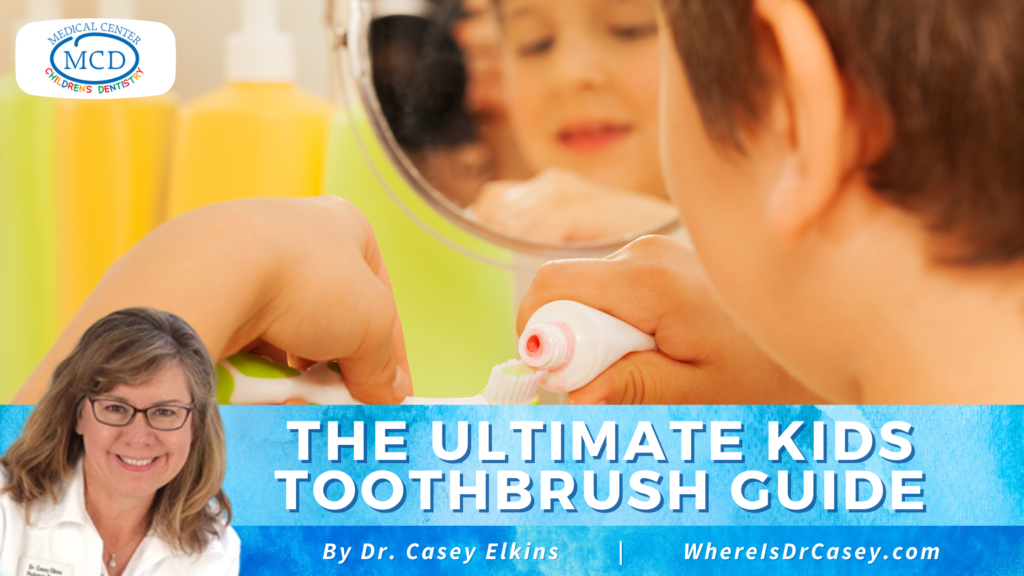
Picking out the best toothbrush for your child can be quite a challenge for some parents. Most kids just go straight to their favorite featured character, but how do you know which toothbrush is actually best for your child? Here is a quick guide Dr. Casey put together to help parents pick the best toothbrush for their little ones…
Manual Toothbrushes vs. Electric Toothbrushes
Most families tend to favor either manual or electric toothbrushes. Mom or Dad is often in charge of making sure everyone has one. The question many parents have is “Between the two options is one actually better than the other?” The American Dental Association (ADA) will be the first to tell you that they can both effectively and thoroughly clean your child’s teeth. However, some kids find electric toothbrushes to be more fun and exciting to use. Kids of different ages also have different degrees of motor skills. This is where an electric toothbrush may make it easier to ensure they are getting a thorough brushing every time. Although both are recommended for kids, based on child and parent preference, children under the age of 2 years old should not use an electric toothbrush.
What Is The ADA Seal of Acceptance?
Some toothbrushes receive the American Dental Association’s Seal of Acceptance. These are also the toothbrushes that are most often recommended by pediatric dentists. This is the selection criteria that Dr. Casey recommends parents consider when purchasing their child’s toothbrush, as well as their own. What does the ADA look at when they are deciding which children's toothbrushes to recommend?
- All of the toothbrush components are safe for oral use.
- All of the toothbrush components are safe for children to use.
- Bristles are free of sharp or jagged edges and endpoints.
- The handle material is manufacturer-tested to show durability under normal use.
- The bristles won’t fall out with normal use.
- The toothbrush can be used without supervision by the average child to provide a significant decrease in mild gum disease and plaque.
In addition to this information, the ADA also requires electrical toothbrushes to pass safety lab tests. They must also provide evidence from one or more clinical studies showing that they are safe for use on soft and hard oral tissues, as well as dental restorations.
Does The Age Stated On The Package Really Matter?
Yes! The age that is stated on the toothbrush packaging is actually very important for your child’s safety. Children should not use a toothbrush that is stated for older age. This can be a safety hazard, especially for young children. A child’s teeth and gums are more sensitive the younger they are, meaning that their toothbrush needs to be a bit more gentle. As they grow and develop, the hardness of the bristles will increase along with the size of the brushes available in their age range. It is important to use toothbrushes in their specific age range, which usually have age-appropriate characters on them to match!
Picking out a new toothbrush is a task that parents face every 3-4 months. Yet, with this information, you’re ready to win the toothbrush battle! Other ways to make brushing more fun at home could be through at-home, educational experiments or other fun activities! For more information on which oral hygiene products are best for your child, feel free to contact us.










3 Responses